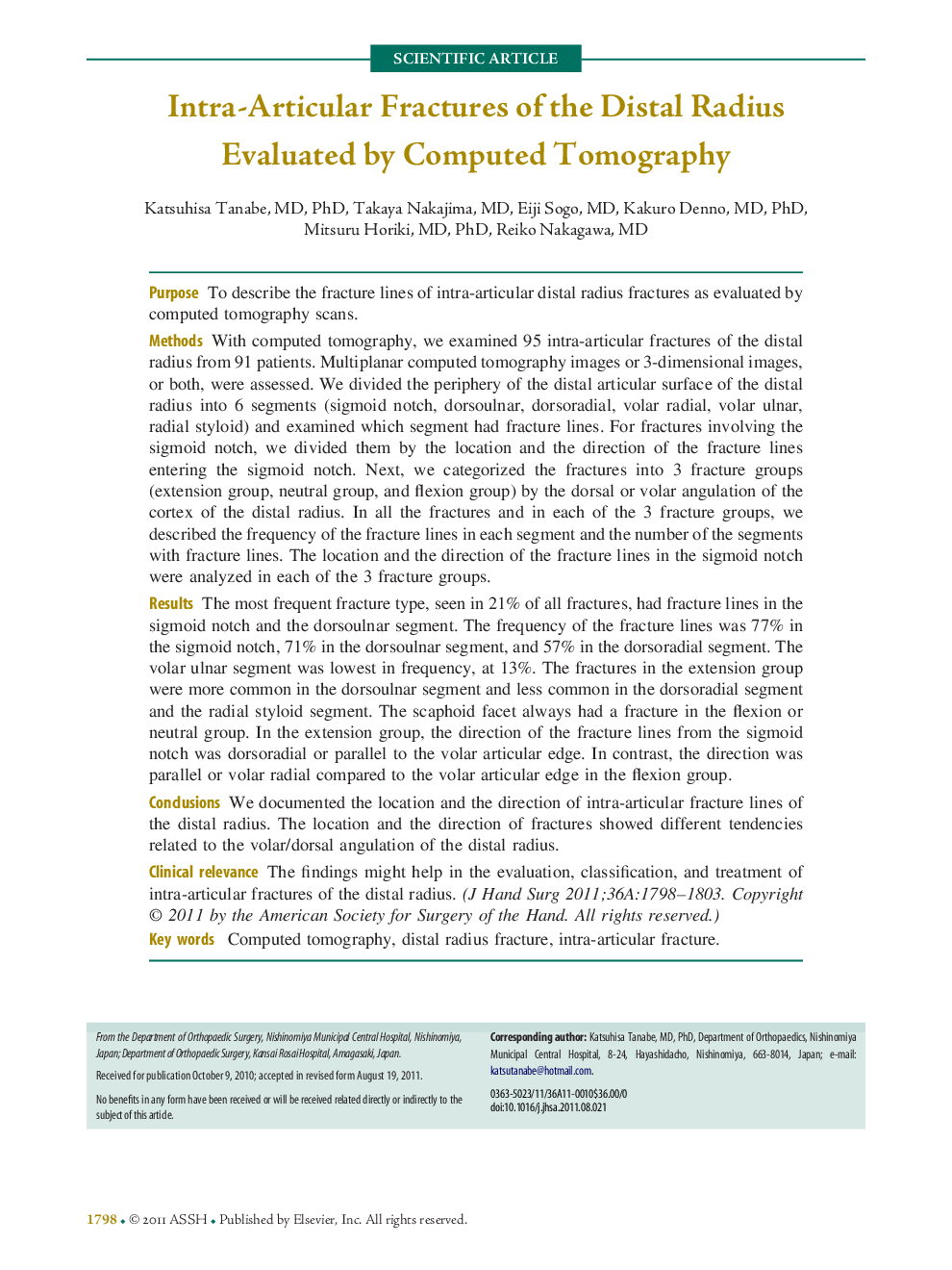| کد مقاله | کد نشریه | سال انتشار | مقاله انگلیسی | نسخه تمام متن |
|---|---|---|---|---|
| 4070114 | 1604402 | 2011 | 6 صفحه PDF | دانلود رایگان |

PurposeTo describe the fracture lines of intra-articular distal radius fractures as evaluated by computed tomography scans.MethodsWith computed tomography, we examined 95 intra-articular fractures of the distal radius from 91 patients. Multiplanar computed tomography images or 3-dimensional images, or both, were assessed. We divided the periphery of the distal articular surface of the distal radius into 6 segments (sigmoid notch, dorsoulnar, dorsoradial, volar radial, volar ulnar, radial styloid) and examined which segment had fracture lines. For fractures involving the sigmoid notch, we divided them by the location and the direction of the fracture lines entering the sigmoid notch. Next, we categorized the fractures into 3 fracture groups (extension group, neutral group, and flexion group) by the dorsal or volar angulation of the cortex of the distal radius. In all the fractures and in each of the 3 fracture groups, we described the frequency of the fracture lines in each segment and the number of the segments with fracture lines. The location and the direction of the fracture lines in the sigmoid notch were analyzed in each of the 3 fracture groups.ResultsThe most frequent fracture type, seen in 21% of all fractures, had fracture lines in the sigmoid notch and the dorsoulnar segment. The frequency of the fracture lines was 77% in the sigmoid notch, 71% in the dorsoulnar segment, and 57% in the dorsoradial segment. The volar ulnar segment was lowest in frequency, at 13%. The fractures in the extension group were more common in the dorsoulnar segment and less common in the dorsoradial segment and the radial styloid segment. The scaphoid facet always had a fracture in the flexion or neutral group. In the extension group, the direction of the fracture lines from the sigmoid notch was dorsoradial or parallel to the volar articular edge. In contrast, the direction was parallel or volar radial compared to the volar articular edge in the flexion group.ConclusionsWe documented the location and the direction of intra-articular fracture lines of the distal radius. The location and the direction of fractures showed different tendencies related to the volar/dorsal angulation of the distal radius.Clinical relevanceThe findings might help in the evaluation, classification, and treatment of intra-articular fractures of the distal radius.
Journal: The Journal of Hand Surgery - Volume 36, Issue 11, November 2011, Pages 1798–1803